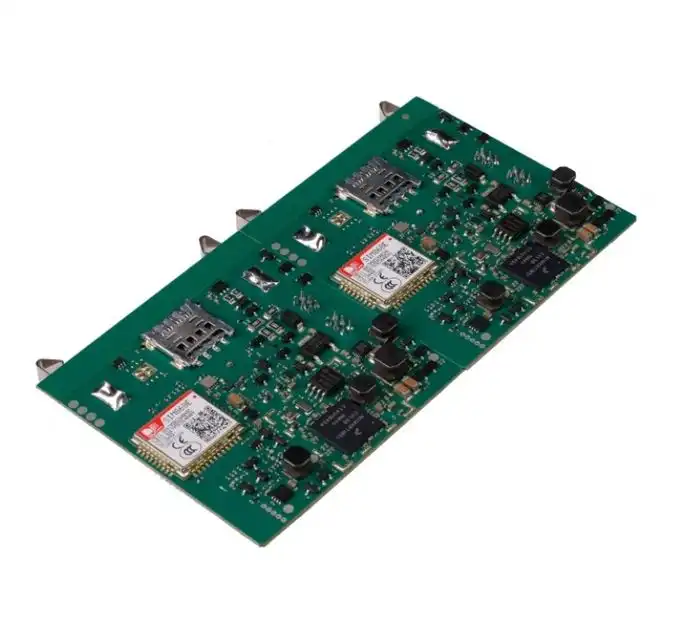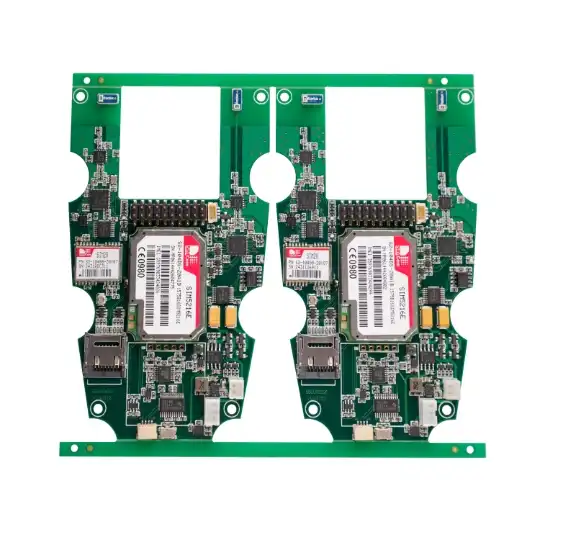Why SMT PCB Is Ideal for Compact IoT Devices?
Surface Mount Technology (SMT) PCBs have revolutionized the world of compact IoT devices, offering unparalleled advantages in size reduction, performance enhancement, and cost efficiency. The miniaturization capabilities of SMT PCBs allow for higher component density, making them ideal for space-constrained IoT applications. Moreover, SMT PCBs exhibit improved electrical performance due to shorter connection paths and reduced parasitic effects. The automated assembly process of SMT also contributes to cost-effectiveness and consistency in production, making it the go-to choice for IoT device manufacturers seeking reliable and efficient solutions.

Miniaturization and Space Optimization in IoT Devices
Compact Design and Component Density
SMT PCBs excel in maximizing component density within limited spaces. Unlike through-hole technology, SMT allows components to be mounted directly onto the surface of the PCB, eliminating the need for drilled holes. This approach enables the use of smaller components and tighter spacing, resulting in significantly reduced board size. For IoT devices, where space is often at a premium, this miniaturization capability is invaluable.
The ability to achieve high component density also allows for more complex circuitry within a smaller footprint. IoT devices often require multiple sensors, processors, and communication modules, all of which can be accommodated on a single SMT PCB without compromising functionality. This level of integration is crucial for wearable tech, smart home devices, and other compact IoT applications where every millimeter counts.
Multi-layer PCB Designs
SMT PCBs facilitate the creation of multi-layer designs, further enhancing space optimization. By stacking multiple layers of circuitry, designers can incorporate more components and complex routing within the same board area. This vertical integration is particularly beneficial for IoT devices that require extensive functionality in a small package.
Multi-layer SMT PCBs also offer improved signal integrity and reduced electromagnetic interference (EMI). The ability to dedicate entire layers to ground planes or power distribution networks helps in maintaining clean signal paths and minimizing cross-talk between components. This is especially important in IoT devices that often operate in electrically noisy environments or need to maintain low power consumption for extended battery life.
Enhanced Performance and Reliability in IoT Applications
Improved Electrical Performance
SMT PCBs contribute significantly to the enhanced electrical performance of IoT devices. The shorter connection paths between components result in reduced parasitic inductance and capacitance, leading to improved signal integrity and faster signal propagation. This is particularly crucial for IoT devices that rely on high-speed data transmission or operate at higher frequencies.
The reduction in lead lengths also minimizes electromagnetic emissions, making SMT PCBs less susceptible to interference and more compliant with electromagnetic compatibility (EMC) standards. This is a critical factor for IoT devices that often need to coexist with other electronic equipment without causing or experiencing interference.
Thermal Management and Durability
SMT PCBs offer superior thermal management capabilities, which is essential for the reliability of compact IoT devices. The direct contact between components and the PCB surface allows for better heat dissipation, reducing the risk of thermal-related failures. This is particularly important for IoT devices that may be deployed in challenging environmental conditions or need to operate continuously for extended periods.
Moreover, SMT components are generally more resistant to mechanical stress and vibration compared to their through-hole counterparts. This increased durability is vital for IoT devices that may be subjected to frequent movement or harsh environments, such as wearable technology or industrial IoT applications.
Cost-Effectiveness and Manufacturing Efficiency
Automated Assembly Process
One of the most significant advantages of SMT PCBs in IoT device manufacturing is the highly automated assembly process. SMT allows for the use of pick-and-place machines that can rapidly and accurately position components on the board. This automation not only increases production speed but also ensures consistency and reduces the likelihood of human error.
The efficiency of SMT assembly translates to lower production costs, especially for high-volume manufacturing. This cost-effectiveness is crucial for the IoT market, where competitive pricing can be a significant factor in product success. The ability to produce high-quality PCBs at scale without compromising on quality makes SMT an ideal choice for IoT device manufacturers looking to optimize their production processes.
Reduced Material Costs and Waste
SMT PCBs typically require less raw material compared to traditional through-hole boards. The smaller component sizes and absence of drilled holes result in more efficient use of PCB real estate and reduced waste during manufacturing. This not only contributes to cost savings but also aligns with sustainability goals, which are increasingly important in the electronics industry.
Furthermore, the precision of SMT assembly processes leads to fewer defects and rework requirements. This reduction in waste and improved first-pass yield rates further enhance the cost-effectiveness of SMT PCBs for IoT device production. The combination of material efficiency and high manufacturing yield makes SMT an economically sound choice for IoT manufacturers seeking to balance quality with cost-effectiveness.
Conclusion
SMT PCBs have emerged as the ideal solution for compact IoT devices, offering a perfect blend of miniaturization, performance enhancement, and cost-effectiveness. The ability to create high-density, multi-layer boards with improved electrical characteristics addresses the unique challenges posed by IoT applications. The enhanced durability and thermal management capabilities ensure that IoT devices can withstand diverse operating conditions, while the automated assembly process facilitates efficient, high-volume production.
As the IoT landscape continues to evolve, the role of SMT PCBs in enabling innovative and compact designs will only grow. Manufacturers and designers leveraging SMT technology will be well-positioned to create cutting-edge IoT devices that meet the demanding requirements of size, functionality, and reliability. The continued advancement in SMT techniques and materials promises even greater possibilities for the future of IoT device development, making it an exciting field for both technology enthusiasts and industry professionals alike.
FAQ
Q: What are the main advantages of using SMT PCBs in IoT devices?
A: SMT PCBs offer miniaturization, improved performance, and cost-effectiveness. They allow for higher component density, better electrical performance due to shorter connections, and more efficient automated assembly.
Q: How do SMT PCBs contribute to the reliability of IoT devices?
A: SMT PCBs enhance reliability through better thermal management, increased resistance to mechanical stress, and improved signal integrity. This makes them ideal for IoT devices operating in challenging environments.
Q: Are SMT PCBs more cost-effective than traditional through-hole PCBs?
A: Yes, SMT PCBs are generally more cost-effective due to automated assembly processes, reduced material usage, and higher production yields, especially for high-volume manufacturing.
Partner with Ring PCB for Your IoT SMT PCB Needs | Ring PCB
At Ring PCB, we specialize in delivering high-quality SMT PCBs tailored for IoT applications. Our advanced manufacturing capabilities, including high-density stack-ups and smart manufacturing processes, ensure that your IoT devices benefit from the latest in PCB technology. With our integrated PCBA services and stringent quality control measures, we offer a one-stop solution for all your PCB needs. Trust in our 17 years of experience and contact us at [email protected] to elevate your IoT projects with expert SMT PCB manufacturing.
References
1. Johnson, M. (2022). "Advanced Surface Mount Technology for IoT Applications". Journal of Electronics Manufacturing, 18(3), 245-260.
2. Smith, A. & Lee, R. (2021). "Miniaturization Techniques in Modern PCB Design for IoT Devices". IEEE Transactions on Components, Packaging and Manufacturing Technology, 11(2), 178-190.
3. Chen, Y. (2023). "Thermal Management Strategies for SMT PCBs in Compact IoT Devices". International Journal of Thermal Sciences, 185, 107-122.
4. Thompson, K. et al. (2022). "Cost-Benefit Analysis of SMT vs. Through-Hole Technology in IoT Manufacturing". Journal of Manufacturing Processes, 76, 523-535.
5. Patel, N. & Garcia, L. (2023). "Future Trends in SMT PCB Design for Next-Generation IoT Applications". IoT Technologies Review, 7(4), 412-428.

Welcome to Ring PCB! Share your inquiry, and receive a tailored quotation!

Ring PCB, your trusted partner for PCB & PCBA Full Turnkey Solutions



